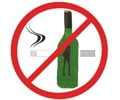
‘After going through the "Get the Message" program, teenagers report that they will be less likely to text or make phone calls while driving.’
Tweet it Now
Incorporating developmental theories relevant to health
beliefs and social learning, the "Get the Message" program aimed to
provide information and up-close knowledge of the risks and real-life
impact of distracted driving.This program to educate teens about distracted driving - including a tour of a hospital trauma center and testimony from a trauma survivor - can increase awareness of the dangers of texting, cell phone use, and other distractions while driving, reports a study in the Journal of Trauma Nursing.
After going through the "Get the Message" program, teens say they will be less likely to text or make cell phone calls while driving, according to the study by Ruth Adeola and colleagues of R. Adams Cowley Shock Trauma Center at University of Maryland Medical Center, Baltimore. They write, "Although teens are the least likely of any age group to engage in healthy driving behaviors, this study demonstrates the ability to influence teen knowledge and behavior positively."
Program Increases 'Perceived Threat' of Distracted Driving
The study evaluated the effectiveness of the "Get the Message" program, designed to identify, define, and measure the factors contributing to distracted driving in adolescents. About 900 teens were surveyed before and after completing the hospital-based injury prevention program.
Advertisement
- An introduction regarding the various types of distracted driving (visual, manual, and cognitive) - focusing on the unique risks faced by inexperienced teen drivers.
Advertisement
- A video depicting the physical, emotional, and mental trauma resulting from a motor vehicle crash due to distracted driving.
- A presentation by a survivor of a serious crash sustained as a teenager - emphasizing a sense of "connection and commonality" with the survivor, and the way the crash affected that person's life.
Before-and-after questionnaires from 900 teens indicated that the program increased awareness of the risks of distracted driving. For example, after the program, the teens were more likely to understand that texting while driving was as dangerous as driving while impaired. They were also more likely to understand the risks of other types of distractions, such as driving while talking on the phone.
Participants also said they were more likely to follow healthy driving behaviors in the future. The percentage of teens who said they were unlikely to make a phone call while driving increased from 64% before viewing the video to 82% afterward. The percentage who said they were unlikely to send a text while driving increased from 69 to 92%.
"Based on the results of the post-survey, it is safe to say that the distracted driving program influenced teen-driving behaviors positively," Ruth Adeola and coauthors conclude. They believe that the program succeeded by "increasing perceived threat and providing a social context in which teens could interact and learn."
Source-Eurekalert










